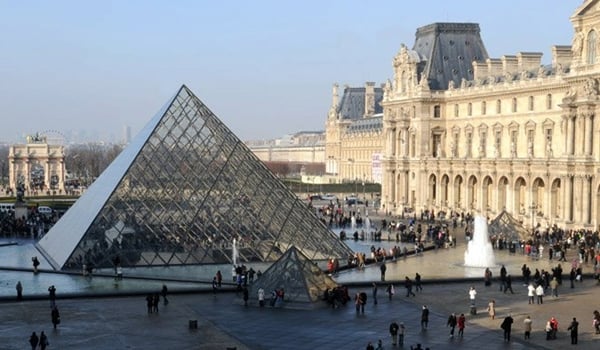Art & Exhibitions
Louvre Expects 12 Million Visitors Per Year by 2025
Can the world's most-visited museum accommodate 30 percent more visitors?

Photo: Courtesy Musée du Louvre.
Can the world's most-visited museum accommodate 30 percent more visitors?

Sarah Cascone

Paris’s Musée du Louvre has announced an anticipated thirty percent increase in its annual attendance over the next 11 years. By 2025, reports the Art Newspaper, the world’s most visited museum (see artnet News report) expects to welcome 12 million annual visitors, up from a record 9.3 million in 2013.
As reported by artnet News last week, the Louvre is among a number of French institutions considering to open its doors a full seven days a week, following the lead of New York’s Metropolitan Museum of Art and Museum of Modern Art, and major museums in London and Madrid.
The projected figures, however, aren’t based on those additional hours. The Louvre expects the dramatic uptick in attendance even if it continues to be closed on Tuesdays. The government, however, is strongly in favor of a seven-day opening schedule, with French foreign minister Laurent Fabius calling an increase in opening hours a “necessity,” according to Le Monde.
Another option would be for the Louvre to remain open past 6 p.m. in the evenings, as it already does on late night Wednesdays and Fridays, when it welcomes visitors until 9:45 p.m. Longer hours come with increased costs for additional staff and security, but also boost income, which could be of critical importance due to government funding cuts.
The projected rise in visitors also gives the museum increased incentive to overhaul the now-iconic glass pyramids. The pyramid entrance has turned into a bottleneck as museum attendance has risen since its completion in 1989. I.M. Pei designed the entryway to accommodate a mere 4.5 million people, failing to predict the dramatic influx of visitors, which has already doubled and now includes the odd flock of sheep (see artnet News report).
As artnet News reported in April, director Jean-Luc Martinez’s decision to focus museum resources on refurbishing the pyramids meant jettisoning the plans of his predecessor, Henri Loyrette, to create dedicated gallery space to host the institution’s Byzantine art collection. Based on the museum’s estimated number of visitors, this would seem to be a wise choice.
The Louvre’s projected attendance figures fail to include an estimate for the museum’s rat population, which has also grown dramatically in recent years (see artnet News article).